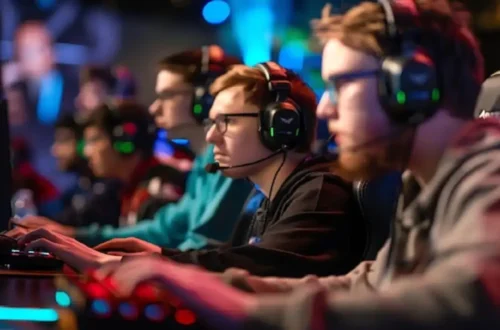Soccer, known as football in most parts of the world, is more than just a sport; it’s a global phenomenon that transcends cultural, economic, and social barriers. With millions of fans and players worldwide, soccer holds a unique place in the hearts of people from all walks of life. From the bustling streets of Rio de Janeiro to the quiet villages of Africa, the game of soccer unites individuals through a shared passion and love for the beautiful game.
The Origins of Soccer
The origins of soccer can be traced back to ancient civilizations, where different forms of ball games were played. However, modern soccer as we know it today began to take shape in England during the mid-19th century. The establishment of the Football Association (FA) in 1863 marked a significant milestone in the codification of the rules of soccer. The FA’s rules provided a standardized framework for the game, paving the way for its widespread adoption and popularity.
The Global Reach of Soccer
Soccer’s global reach is unparalleled. The sport is played in nearly every country, and its major tournaments, such as the FIFA World Cup, UEFA Champions League, and Copa América, draw billions of viewers. The FIFA World Cup, held every four years, is the most-watched sporting event in the world, with more than 3.5 billion people tuning in to the 2018 edition held in Russia.
Soccer in Europe
Europe is often considered the epicenter of professional soccer. The continent boasts some of the most prestigious leagues and clubs, including the English Premier League, La Liga in Spain, Serie A in Italy, and the Bundesliga in Germany. Clubs like Manchester United, Real Madrid, Barcelona, and Bayern Munich have achieved legendary status, attracting top talent from around the globe.
Soccer in South America
South America has a rich soccer heritage, producing some of the greatest players in history, such as Pelé, Diego Maradona, and Lionel Messi. The continent’s passion for the game is evident in its vibrant domestic leagues and intense international rivalries. Brazil and Argentina, in particular, are soccer powerhouses with numerous World Cup victories and a plethora of talented players.
Soccer in Africa
Soccer is the most popular sport in Africa, providing a source of pride and inspiration for many. African nations have made significant strides in international competitions, with teams like Nigeria, Cameroon, and Senegal achieving notable success. The continent is also a breeding ground for young talent, with many African players making a mark in European leagues.
Soccer in Asia and North America
In recent years, soccer has gained considerable traction in Asia and North America. Countries like Japan, South Korea, and China have invested heavily in developing their soccer infrastructure and nurturing young talent. In North America, Major League Soccer (MLS) has grown in popularity, attracting international stars and increasing the sport’s visibility in the United States and Canada.
The Art and Science of Soccer
Soccer is a game that combines athleticism, strategy, and skill. At its core, the sport is simple: two teams of eleven players each try to score goals by getting the ball into the opposing team’s net. However, the nuances and intricacies of the game make it endlessly fascinating.
The Role of Strategy
Strategy plays a crucial role in soccer. Coaches devise game plans that take into account the strengths and weaknesses of their own team as well as their opponents. Formations, such as the 4-4-2, 4-3-3, and 3-5-2, dictate how players are positioned on the field and influence the style of play. Teams may adopt an attacking approach, focusing on possession and creating scoring opportunities, or a defensive approach, prioritizing solid organization and counter-attacks.
The Importance of Skill
Individual skill is paramount in soccer. Players must possess a wide range of abilities, including dribbling, passing, shooting, and defending. Exceptional players, like Cristiano Ronaldo and Lionel Messi, are known for their technical prowess, creativity, and ability to change the course of a game with a moment of brilliance. Young players aspire to emulate their idols, spending countless hours honing their skills on the training ground.
The Physical Demands
Soccer is a physically demanding sport that requires a high level of fitness. Players need to have endurance, speed, agility, and strength to compete at the highest level. Matches are played over two 45-minute halves, with players covering an average of 10-12 kilometers per game. The intensity of the sport demands rigorous training and conditioning to ensure peak performance.
The Cultural Impact of Soccer
Soccer’s influence extends far beyond the pitch. The sport has a profound impact on culture, society, and even politics. Major tournaments like the World Cup bring together nations and foster a sense of unity and camaraderie. The sport has the power to inspire and uplift, providing moments of joy and celebration for millions.
Soccer and Social Change
Soccer has often been a catalyst for social change. In many countries, the sport has played a role in breaking down racial and social barriers. The story of Pelé, who rose from humble beginnings in Brazil to become a global icon, serves as an inspiration to countless young people. In South Africa, soccer was a unifying force during the fight against apartheid, with the national team’s success helping to heal a divided nation.
The Business of Soccer
The business side of soccer is a multi-billion dollar industry. Top clubs generate significant revenue through ticket sales, merchandise, sponsorships, and broadcasting rights. The transfer market, where players are bought and sold for staggering sums of money, is a testament to the sport’s financial clout. The commercialization of soccer has brought both opportunities and challenges, with debates over the influence of money on the game’s integrity.
The Role of Fans
Fans are the lifeblood of soccer. Their passion and support create an electric atmosphere in stadiums and drive the success of clubs. From the fervent chants of European ultras to the colorful displays of South American supporters, fans bring the game to life. The rise of social media has also allowed fans to connect with their favorite players and clubs in new and engaging ways.
The Future of Soccer
The future of soccer looks bright, with the sport continuing to evolve and grow. Technological advancements, such as VAR (Video Assistant Referee) and goal-line technology, have enhanced the accuracy and fairness of the game. Grassroots development programs and academies are nurturing the next generation of talent, ensuring a steady pipeline of skilled players.
Challenges and Opportunities
While soccer faces challenges, such as issues of corruption, inequality, and the impact of the COVID-19 pandemic, there are also numerous opportunities for growth. Expanding the sport’s reach in untapped markets, promoting diversity and inclusion, and leveraging technology to enhance fan engagement are some of the ways soccer can continue to thrive.
Conclusion
Soccer, or football, is more than just a game; it’s a global cultural phenomenon that brings people together and inspires millions. Its rich history, strategic depth, and cultural significance make it a unique and beloved sport. As soccer continues to evolve and capture the hearts of new generations, its status as the world’s most popular game remains unchallenged. Whether played on the streets, in local parks, or in grand stadiums, soccer’s universal appeal and enduring charm ensure that it will continue to be a source of joy and passion for years to come.



